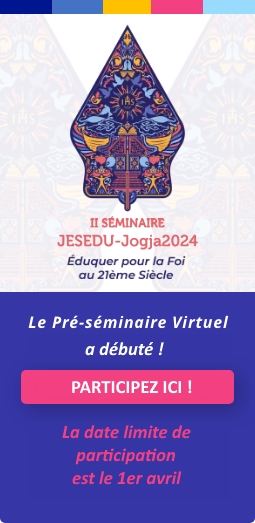Over the past couple years, St. Louis University High science teacher Bill Anderson ’78 has been among a group of international educators and experts that developed a groundbreaking environmental science textbook called Healing Earth. This free, online textbook, officially launched on January 29, 2016, is the first of its kind to address the major ecological challenges of our time from an integrated scientific, spiritual, and ethical perspective.
“Healing Earth helps take science to a new level,” says Anderson. “It goes beyond simply explaining our world’s environmental problems. It helps us take the next step of having a real discussion focused on ethics and spirituality, and doing something constructively to address our challenges.”
Healing Earth evolved from the International Jesuit Ecology Project (IJEP), a collaborative effort aimed at addressing Superior General Adolfo Nicolás’s 2011 published document Healing a Broken World. In this document, Nicolás challenged Jesuit schools to “engage students in transformative education,” specifically calling for development of “curricula that address sustainability issues and imparts a certain level of environmental literacy.”
Intended for upper level secondary school students, beginning college students and adult learners, Healing Earth presents a unique approach to six major ecological challenges of our time:
- Declining biodiversity
- Natural resource depletion
- Shift to renewable energy
- Water quality and availability
- Food quality and availability
- Global climate change
According to Michael Schuck, PhD, Associate Professor of Theology at Loyola University Chicago who helped spearhead the development of Healing Earth, the new textbook has already gained global traction—prior to its official launch. For example:
- 22 teachers/professors have taught, are teaching, or plan to teach Healing Earth in the next term
- Healing Earth teachers/professors are in 8 secondary schools and 15 universities, all representing 7 countries
- Courses taught thus far using some or all of Healing Earthinclude biology (1), biology education (1), engineering (1), environmental science (13), fine arts (1), geology (1), pharmacy (1), plant science (1), and theological ethics (6)
- 92 people in 13 countries are actively engaged in staffing, creating, developing, translating, teaching, and spreading the word about Healing Earth
Sub-titled as a “Living Text,” Healing Earth will continue to evolve after its launch, ever representative of a dynamic, ever-changing world. Because the textbook was developed by an international, Loyola University Chicago-led team—with experts in science, spirituality and ethics from Africa, Asia Pacific, Europe, Latin America, North America and South Asia—it offers an inclusive perspective with relevant examples from around the world.
The first edition of the textbook includes chapters on Biodiversity, Natural Resources, Energy, Water, and Global Climate Change. It features a Teacher’s Guide to provide sample lesson plans and help environmental science educators in the areas of ethics and spirituality.
Anderson has already been using Healing Earth for his AP Environmental Science class. Since the textbook has been a work-in-progress until now, he has also supplemented his class with other resources. In the future, he intends to rely almost exclusively on Healing Earth.
“Healing Touch provides science teachers with a new tool to approach their courses with an Ignatian lens,” says Anderson. “It has been very helpful for my own class. I’ve done things I haven’t done before. It has really engaged and expanded my own thinking.
“Ultimately, it is the students who will benefit. They are the ones who will learn the science, consider the ethical and spirituality perspectives, and go on to change the world for the better ».
>>CLICK HERE to listen to a US National Public Radio interview about Healing Earth
>>CLICK HERE to access Healing Earth
This article was originally published on St. Louis University High’s website.
Se connecter ou Adhérer
pour créer et afficher des commentaires
